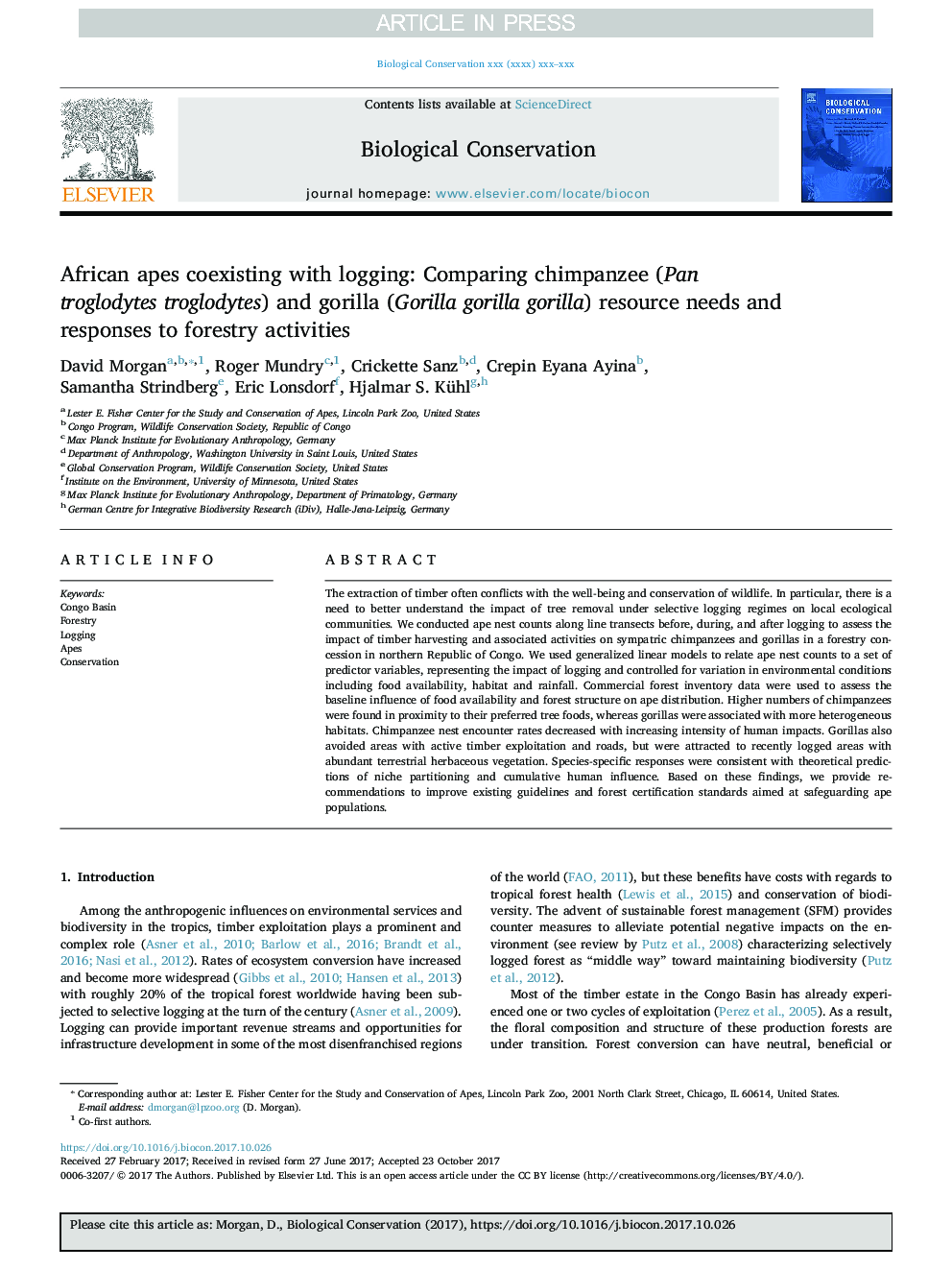| Article ID | Journal | Published Year | Pages | File Type |
|---|---|---|---|---|
| 8847535 | Biological Conservation | 2018 | 10 Pages |
Abstract
The extraction of timber often conflicts with the well-being and conservation of wildlife. In particular, there is a need to better understand the impact of tree removal under selective logging regimes on local ecological communities. We conducted ape nest counts along line transects before, during, and after logging to assess the impact of timber harvesting and associated activities on sympatric chimpanzees and gorillas in a forestry concession in northern Republic of Congo. We used generalized linear models to relate ape nest counts to a set of predictor variables, representing the impact of logging and controlled for variation in environmental conditions including food availability, habitat and rainfall. Commercial forest inventory data were used to assess the baseline influence of food availability and forest structure on ape distribution. Higher numbers of chimpanzees were found in proximity to their preferred tree foods, whereas gorillas were associated with more heterogeneous habitats. Chimpanzee nest encounter rates decreased with increasing intensity of human impacts. Gorillas also avoided areas with active timber exploitation and roads, but were attracted to recently logged areas with abundant terrestrial herbaceous vegetation. Species-specific responses were consistent with theoretical predictions of niche partitioning and cumulative human influence. Based on these findings, we provide recommendations to improve existing guidelines and forest certification standards aimed at safeguarding ape populations.
Related Topics
Life Sciences
Agricultural and Biological Sciences
Ecology, Evolution, Behavior and Systematics
Authors
David Morgan, Roger Mundry, Crickette Sanz, Crepin Eyana Ayina, Samantha Strindberg, Eric Lonsdorf, Hjalmar S. Kühl,
